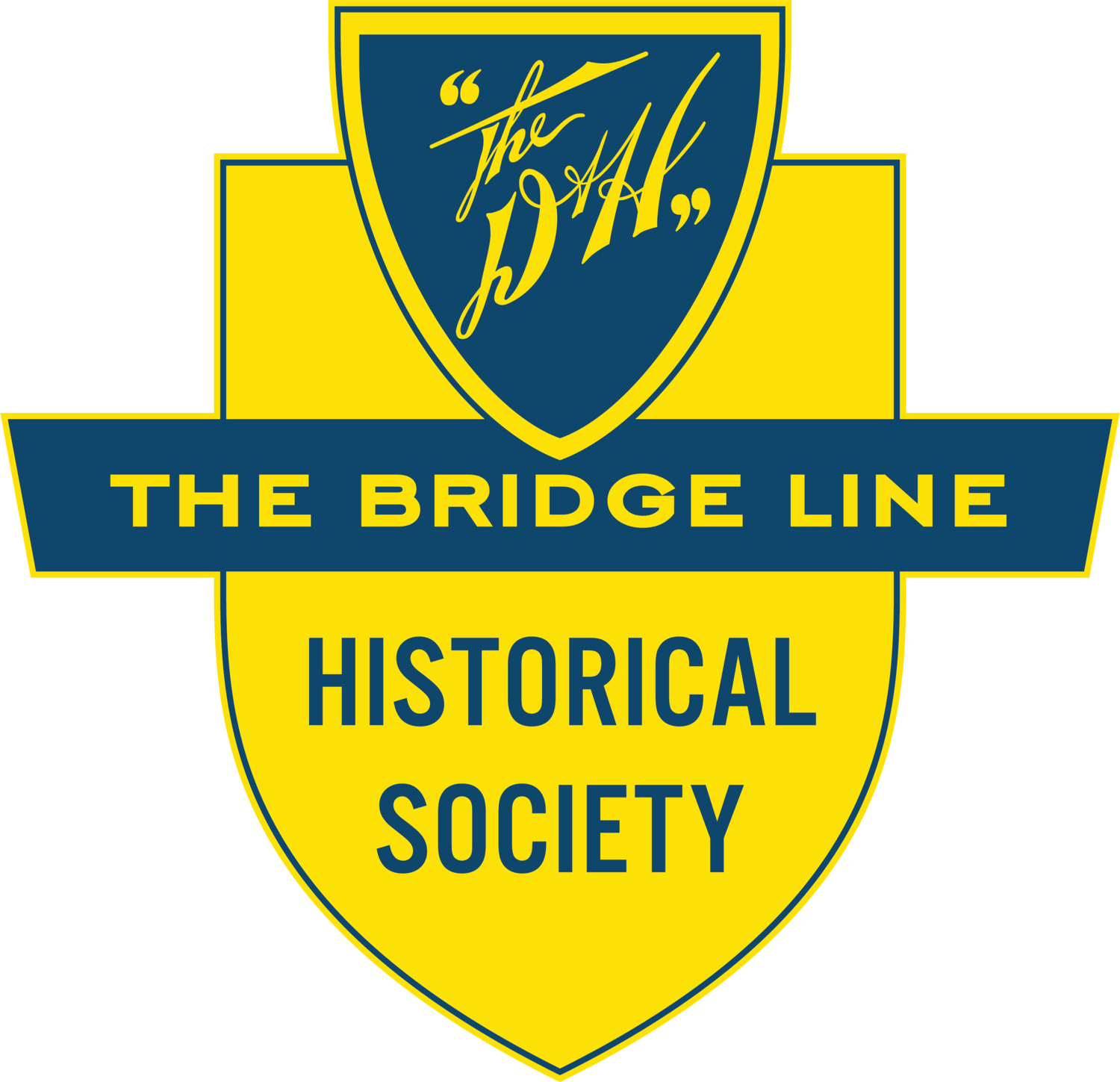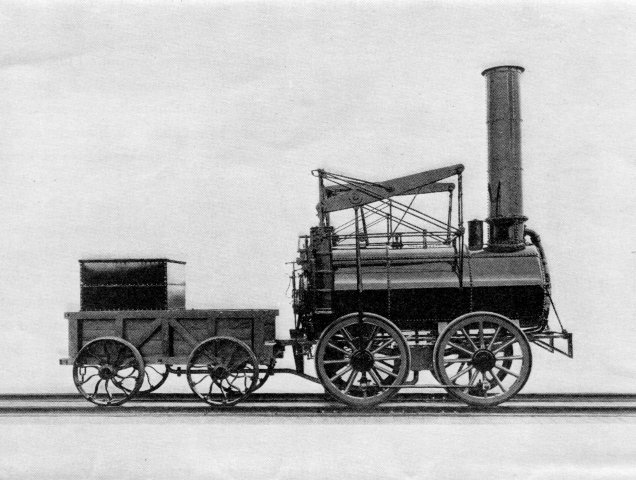The Stourbridge Lion
| Stourbridge Lion Data | |
|---|---|
| Type | 0-4-0 |
| Weight on engine truck (lbs.) | N/A |
| Weight on drivers (lbs.) | 14,000 |
| Weight of engine (lbs.) | 14,000 |
| Weight of tender loaded (lbs.) | 5,800 |
| Weight of engine and tender (lbs.) | 19,800 |
| Boiler pressure | 50 psi |
| Cylinders | 8.5" x 36" |
| Driver diameter | 48" |
| Tractive effort (lbs.) | 825 |
| Grate area (sq. ft.) | 8 |
| Valves and motion | Slide, loose eccentric |
| Feedwater heater | Foster, Rastrick & Co. |
| Water capacity | 400 gals. |
| Coal capacity | 1/4 ton |
| Fuel | Anthracite coal |
| Track gauge | 4'3" |
The "STOURBRIDGE LION" was the first locomotive to run on a railway in America, and was operated between Honesdale and Seely's Mills in Pennsylvania on the Delaware and Hudson Canal Company's railroad, August 8, 1829.
On March 13, 1823, The Delaware and Hudson Canal Company obtained rights from the Legislature of Pennsylvania, authorizing them to construct a canal from the mouth of the Lackawaxen to the present site of Honesdale and also to construct a railroad from their coal beds at Cardondale to the head of this canal.
In January, 1828, Horatio Allen left New York for England and contracted for four locomotives, one of which, the "STOURBRIDGE LION," built by Foster, Rastrick and Company of Stourbridge, England, was shipped in February, 1829, unloaded in New York, May 14, and then taken to Honesdale, PA, arriving the later part of July, where it was placed on the track and prepared for service.
One of the Company's coal wagons was fitted up to serve as a tender and a box added under the boiler, built around the junction of the two exhaust pipes form the cylinders with the single exhaust pipe to the stack, from which water flowing form the tender was pumped into the boiler. This was probably the first feed water heater in America.
The name LION was suggested by the fancy of a workman, who painted on the circular front , the head of a fierce-looking lion in bright colors, covering nearly the entire area.
Early in the forenoon of August 8, 1829, the "STOURBRIDGE LION" was "fired up" with Lackawaxen coal and ready to go. It was run back and forth on the straight portion of the track by Mr. Allen and then set forth on its history-making trip, for it was the first locomotive to run on a railroad in the Western Hemisphere, covering a distance of about one and a half miles to Seely's Mills, where it was reversed and returned to its starting point.
The trial was a failure despite the beautiful performance of the Lion. The original specification for the locomotive had specified a maximum weight of 4 tons. The Lion and her sisters weighed in at 7.5 tons, nearly double the specified weight. The track made of hemlock rails with iron railcap with tie spacing of 10' between ties had been constructed for a much lighter locomotive and would not support the greater weight of the locomotives. Sadly, the Lion and her sisters were retired to other uses. The only remaining pieces of these locomotives are the boiler from the Lion and one of the cylinders from the America, both in the possession of the Smithsonian. All traces of the Delaware and the Hudson disappeared after the locomotives had been delivered to Honesdale.
A fourth locomotive was produced by Foster, Rastrick and Company. The Agenoria was the fourth locomotive of the 'Lion' class believed by many to have been the prototype of the four, as it shows a number of modifications.
It began operation on the local Kingswinford Railway, moving coal and other items between the Staffordshire & Worcester Canal, and the Pensnett Ironworks, which was owned by James Foster, one of the partners in Foster, Rastrick Co.. Although rapidly dated, it operated successfully until around 1863, and was then refurbished and passed to the Science Museum London. It is now in the National Railway Museum, York and is one of their oldest exhibits.
Photograph supplied by Thomas Cockeram.






